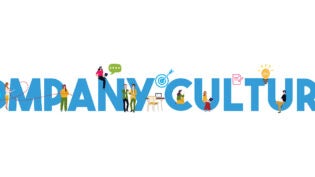Home > Leadership > Open Culture >
How an Entrepreneur Can Be Open But Stay in Control
By: Marty Zwilling

The emergence of social networking and the Internet has caused a new focus and value on “openness,” which leads to a new element of leadership, called “Open Leadership.” The mantra of open leadership is “Be Open, Be Transparent, and Be Authentic.” This is counter to the traditional business premise of “control,” so many companies are still pushing back.
Charlene Li, in her book “Open Leadership,” shows leaders how to tap into the power of the social technology revolution and use social media to be “open” while still maintaining control. I support her ten elements of the basic framework and vocabulary of open information sharing and open decision making:
Explaining: creating buy-in. This element is sharing information through the new video, audio, and interactive media about, and the logic behind decisions, direction, or strategy with the goal of gaining buy-in to the idea so everyone is working toward the same goal.
Updating: capturing knowledge and actions. New publishing tools, like blogs, collaboration platforms, and even Twitter, provide updates that are easily available. These have the added benefit of being searchable and discoverable.
Conversing: engaging in a dialogue with others. Employees can share best practices with customers on social network platforms and customers can help each other. When done well, an organization’s online community can become a competitive advantage.
Open microphone: encouraging participation. Everyone and anyone is welcome to contribute through new collaborative tools with no preconditions. Search, combined with ratings and reviews become key in separating the useful from the rambling.
Crowdsourcing: solving a specific problem together. The goal here is to grow the sources of new ideas and gather fresh thinking to create a new product or service. It can also be for solving everyday problems, like logo design or open source code.
Platforms: setting standards and sharing data. Ebay is an example of open standardizing on how items are listed and how transactions are handled, enabling millions of individual sellers. Common platforms enable open data access at any level.
Centralized. The key challenge of making centralized decision making more open is to open up information sharing in both directions, so that those in power have the right information and also have the commitment to share it back out to the organization.
Democratic. Increasingly, voting is used to allow people to choose from a set of equally viable options, with the result is that employees feel a greater sense of ownership in the process. This is also becoming prevalent in decisions with customers on products.
Consensus. Social technology tools now allow this process to be done quickly and less chaotically, with tremendous buy-in from everyone affected. This process works well in today’s extremely flat and non-hierarchical startup organizations.
Distributed. This is a hybrid of all the preceding decision processes, in that it pushes decisions away from the center to where information and knowledge actually reside, typically closer to the customer. This mode requires more discipline and planning.
I’m still waiting to see how all this works out in real life. The challenge is to be open without abdicating all control, or spiraling into chaos. Hopefully, by embracing social media rather than banning it, leaders can transform their organizations to become more effective, decisive, and ultimately more profitable in this new era of openness in the marketplace. What do you think?
Published: May 20, 2013
3900 Views
3900 Views












